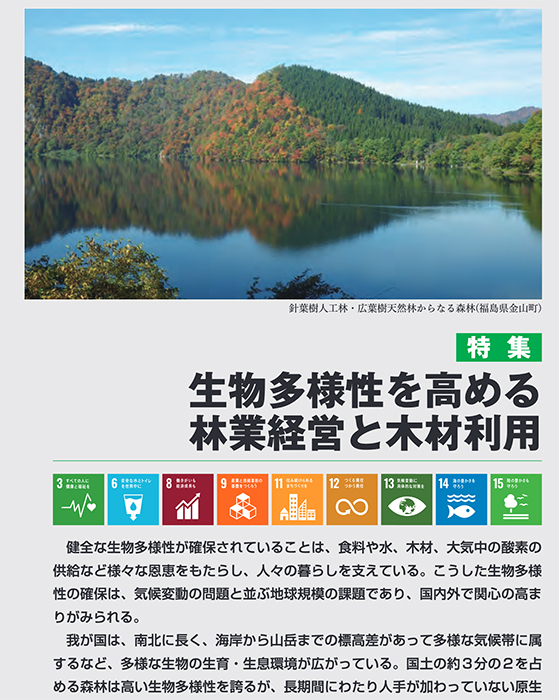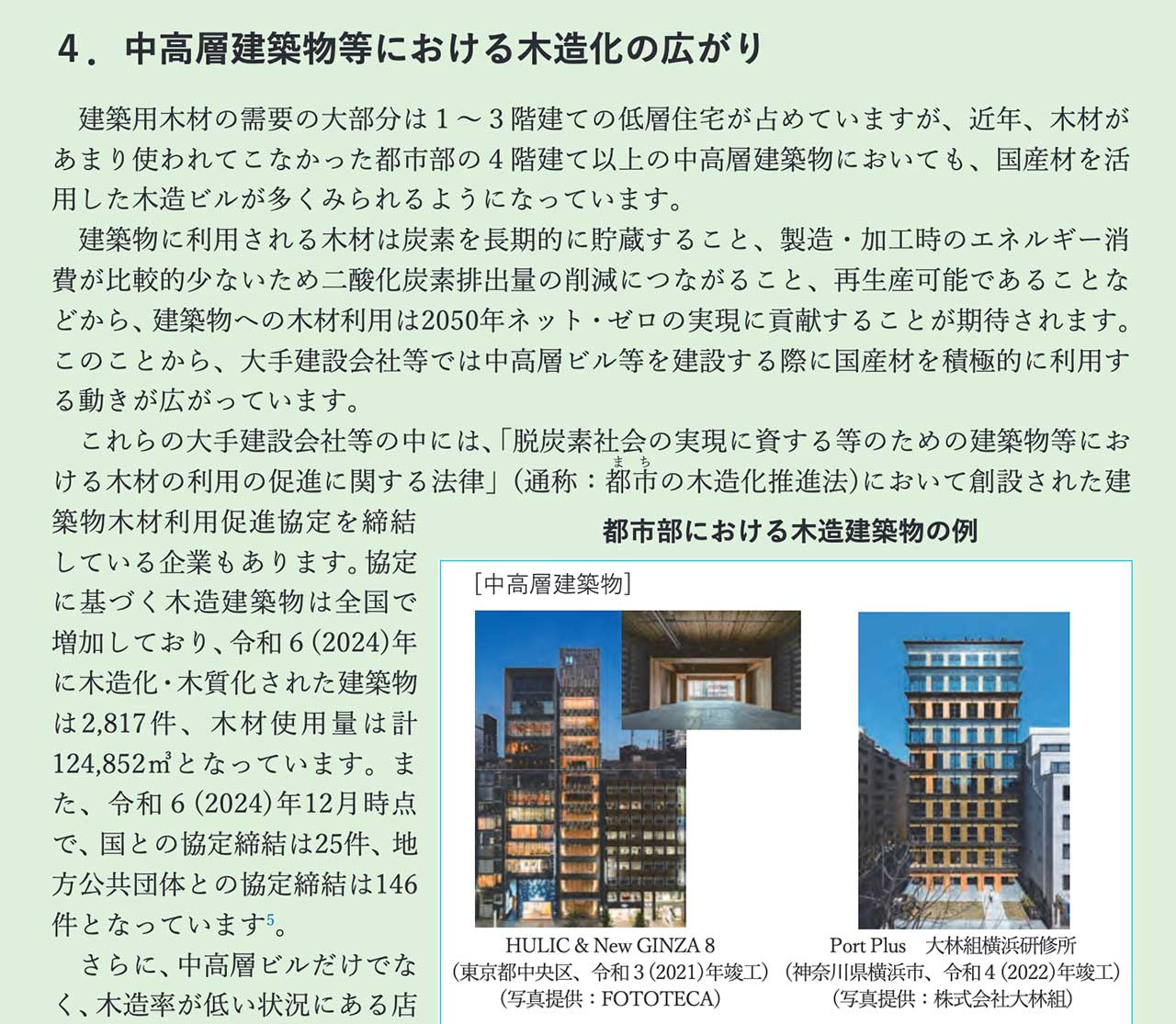Updated by "Forest Circular Economy" Editorial Board on June 04, 2025, 10:00 AM JST
Editorial Board, Forest Circular Economy
Forestcircularity-editor
We aim to realize "Vision 2050: Japan Shines, Forest Circular Economy" promoted by the Platinum Forest Industry Initiative. We will disseminate ideas and initiatives to promote biomass chemistry, realize woody and lumbery communities, and encourage innovation in the forestry industry in order to fully utilize forest resources to decarbonize the economy, strengthen economic security, and create local communities.
The 2024 White Paper on Forests and Forestry was approved by the Cabinet and released by the Ministry of Agriculture, Forestry and Fisheries on June 3, 2024. This year's white paper featured for the first time "Forestry Management and Timber Use to Enhance Biodiversity" as its special theme. The report clearly calls for a shift from the conventional forestry policy that emphasizes resource supply to an industrial model that utilizes the ecosystem functions of forests.
This year's white paper visualizes the impact of forestry operations on biodiversity, and notes the potential for maintaining and enhancing habitats for a diverse range of plants and animals through appropriate management. It redefines the evaluation of the multifunctional nature of forests as a composite value that includes ecosystem services in addition to the conventional axes of timber supply and CO2 absorption.

This is a move that will also affect private businesses seeking to market environmental values, such as investment in natural capital and the use of the J-credit system. The white paper introduces models of forest management that emphasize diversity and examples of regions working to introduce multiple tree species, indicating that the conversion of planted forests created with a single tree species will be a policy issue in the future.
For forestry management entities, consideration of biodiversity in logging and reforestation plans may become a new evaluation indicator. In addition, the entire supply chain, including construction, distribution, and processing of timber, is expected to be reorganized around environmental considerations, such as green purchasing and increasing the value of domestic timber.
As in previous years, this year's white paper includes basic data such as the amount of forest resources, the number of forestry workers, and the self-sufficiency rate of timber, but the policy perspective of "viewing forests as environmental infrastructure" has become even clearer through the special feature. This may lead to the development of nature-symbiosis sites by local governments and the expansion of the movement to evaluate the value of forests as an object of ESG investment.
For example, lumber grown using biodiversity-conscious methods may have new brand value, accompanied by a story that includes the background of its production. For environmentally conscious consumers and companies that emphasize ESG management, it has appeal as a material of choice.
In addition, rich forests where diverse organisms coexist are increasingly valued as places for eco-tourism and environmental education, and are expected to be a new source of revenue for the local economy. The White Paper clearly shows that incorporating these multifaceted values, including ecosystem services, into forest management is a realistic model for the next generation of forestry.

■ Key Points of the White Paper
(Topics in 2024)
Results of 5 years of Forest Management System
The "Forestry Occupation" skills test was launched - the birth of the "Forestry Technician" - and the "Forestry Technician" was born.
Lumber self-sufficiency rate recovered to 43%, the highest in recent years.
Spread of wood construction in medium- and high-rise buildings, etc.
Future development of "modified lignin," a biomass-derived material that can replace plastics
Response to the Noto Peninsula Earthquake of 2024 and mountain disasters caused by heavy rain
(Chapter 1) Forest Development and Conservation
Reforestation, pollen source control, forest environment tax/forest environment concession tax, J-credits, mountain control measures, forest fire and other forest damage control, etc.
(Chapter 2) Forestry and mountain villages (mountainous areas)
Forestry management, trends in forestry labor force, special forest products such as mushrooms and firewood, revitalization of mountain villages, etc.
(Chapter 3) Supply, Demand and Utilization of Wood and the Wood Industry
Measures against illegal logging, use of wood in the construction sector, wood exports, strengthening the competitiveness of the wood industry, etc.
(Chapter 4) Management and administration of national forests
Role of national forests, management and administration emphasizing public interest, contribution to overall forest and forestry policies, etc.
(Chapter 5) Recovery from the Great East Japan Earthquake
Forestry, forestry and timber industry initiatives for reconstruction, measures against radioactive materials in forests, supply of safe special-purpose forest products, etc.